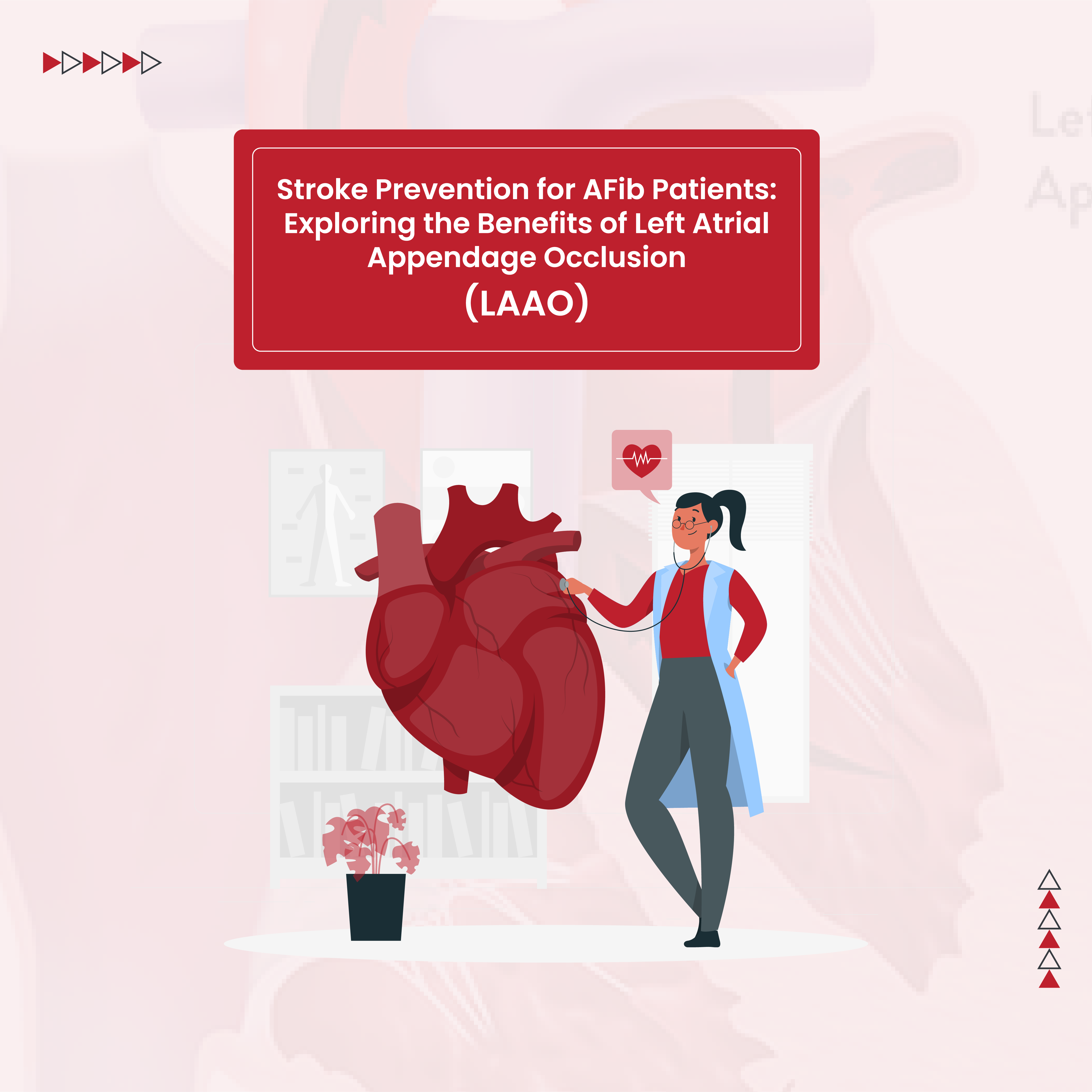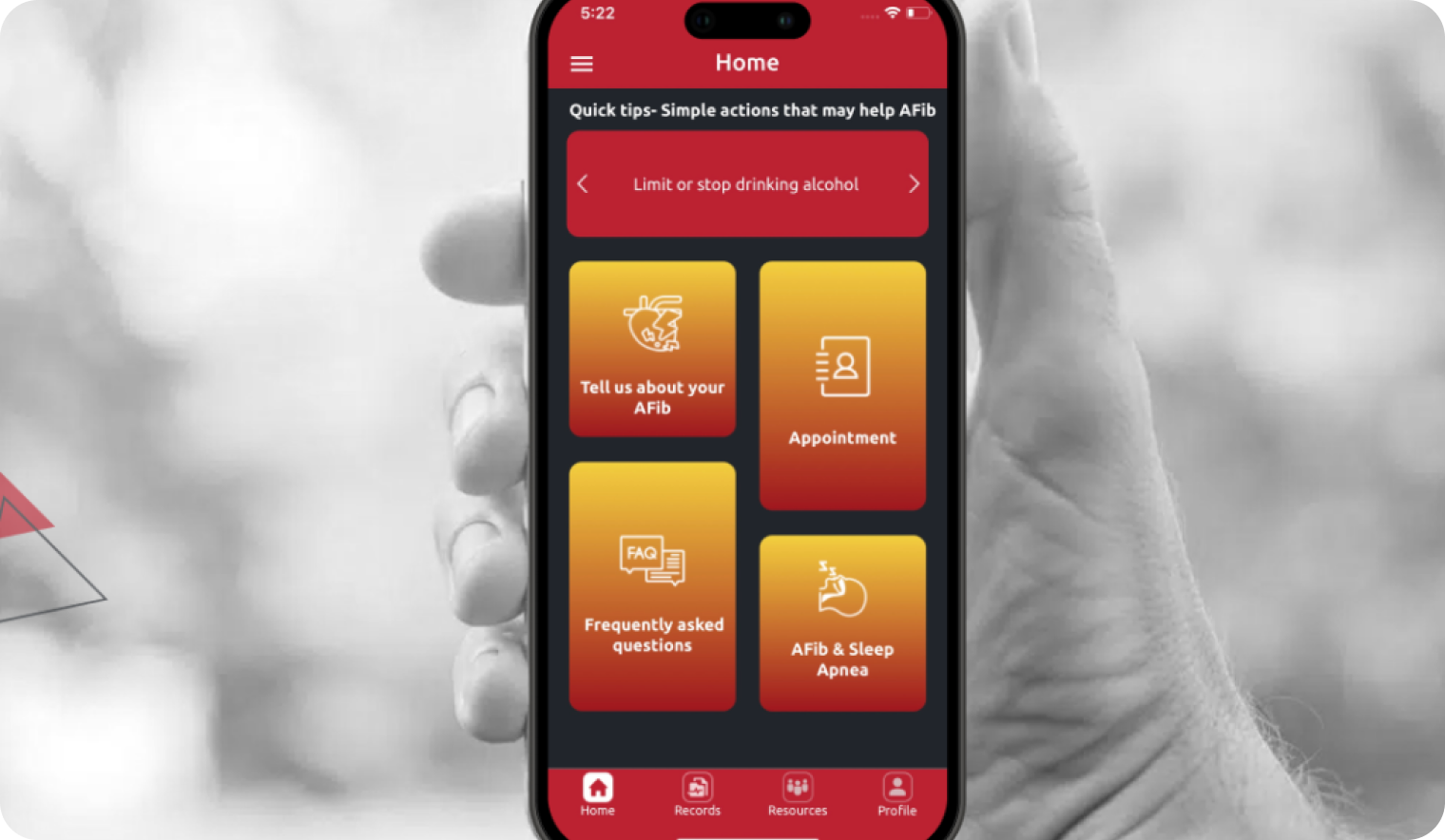Atrial fibrillation is the most common irregular heart rhythm. People with atrial fibrillation are at increased risk for heart failure, stroke, and death. Increasing research supports attempting to maintain a normal heart rhythm early on in the process of atrial fibrillation. Medications and lifestyle changes used to be the only treatment options for atrial fibrillation, however, procedures for AFib are now commonplace.
Catheter ablation is an arrhythmia procedure frequently used to help maintain a normal rhythm in people with paroxysmal (intermittent) atrial fibrillation. However, catheter ablation alone may not be sufficient for persistent or long-standing persistent AFib. Persistent atrial fibrillation is defined as continuous AFib for greater than 7 days and long-standing persistent AFib is continuous AFib for greater than 12 months.
Over 33 million people worldwide have atrial fibrillation and it is estimated that 70% of these people have persistent or long-standing persistent atrial fibrillation. The longer a person has atrial fibrillation, the more structural changes there are within the heart. These structural changes make atrial fibrillation harder to treat and less likely to respond to medications or catheter ablation.
Surgery for AFib may be recommended if a person otherwise needs heart surgery, such as coronary artery bypass graft surgery or valve surgery. A stand-alone arrhythmia surgery is also an option if other treatments for atrial fibrillation, like catheter ablation or antiarrhythmic medications, have been unsuccessful at maintaining a normal heart rhythm.
What is the best surgery for AFib
The maze procedure, or maze surgery, is an arrhythmia surgery for AFib. During a maze surgery, a doctor creates a series of lines in the heart tissue using heat, cold, laser or a scalpel. These lines create a “maze” of scar tissue which interrupts the abnormal electrical signals in the upper left heart chamber (atrium) which cause atrial fibrillation.
Maze surgery for AFib has a high success rate and 70-95% of people who undergo a maze surgery have long-term freedom from atrial fibrillation. Surgical ablation, similar to catheter ablation, has been associated with an improved quality of life and a decreased need for antiarrhythmic medications. Neither arrhythmia procedure for AFib has been shown to prolong life.
If a person with symptomatic atrial fibrillation is getting another heart surgery, such as a valve replacement, a maze procedure during the open-heart surgery is the preferred treatment method for the atrial fibrillation. Studies have shown that patients with atrial fibrillation who undergo a maze procedure during open-heart surgery have a significantly lower incidence of AFib recurrence.
Some people pursue surgical ablation for AFib because catheter ablation, cardioversion, and/or antiarrhythmic medications have been ineffective. If the surgical ablation is not going to be done in conjunction with another heart surgery, the maze is usually done via a minimally invasive approach. This means that the surgeon will access the upper chambers of the heart by making small incisions on the sides of the chest or upper abdomen rather than across the breastbone as is usually done during open-heart surgery.
Does surgery for AFib decrease stroke risk?
An aspect of atrial fibrillation management that is usually included during a maze procedure is left atrial appendage exclusion. The heart has 4 chambers, two upper chambers, and two lower chambers. In atrial fibrillation, chaotic electrical signals originate in the left upper chamber (atrium). This causes the left atrium to quiver (fibrillate) and work ineffectively which can result in blood pooling and blood clot formation. This is why people with atrial fibrillation are at a higher risk of stroke. In fact, people with AFib have a 5 times increased risk of stroke.
The most common site for a blood clot to form in the setting of atrial fibrillation is in the left atrial appendage. The left atrial appendage is a small sac-like pouch of tissue which projects off the side of the left atrium. Closing the communication between the left atrial appendage and left atrium with a suture or clip can be done during a maze procedure. This significantly lowers a person’s risk of an AFib related blood clot even if there is a recurrence of atrial fibrillation.
There are other, non-surgical, options for closing the left atrial appendage such a procedure which implants a small device across the opening of the appendage to block communication between the appendage and the left atrium. This is less invasive than surgical exclusion of the left atrial appendage. However, if someone is unable to take a blood thinner (i.e. high risk of bleeding) AND has symptomatic atrial fibrillation a surgical ablation may be a good option because it would allow for treatment of both the atrial fibrillation and the left atrial appendage during one procedure.
What is the best treatment for irregular heartbeat?
If a person’s irregular heartbeat is caused by atrial fibrillation there are a number of different treatment options. Treatment of atrial fibrillation is highly individualized. The best treatment will depend on the type of atrial fibrillation, presence of risk factors and a person’s willingness/ability to take medications or undergo a procedure. If an arrhythmia procedure is indicated, the type of procedure recommended will depend on what kind of atrial fibrillation a person has and if any other heart procedures are also indicated.
Catheter ablation for AFib
Catheter ablation uses heat, cold or laser to create scar tissue on the inside of the heart. It is most effective in treating paroxysmal, rather than persistent, atrial fibrillation. When atrial fibrillation first develops, the triggers are predominantly located in the area where the pulmonary veins connect into the heart. Over time, atrial fibrillation causes structural changes in the heart and additional triggers develop throughout the left atrium, particularly along the back wall. Usually, by the time atrial fibrillation is persistent, there are a number of these triggers outside of the pulmonary veins.
Catheter ablation focuses primarily on the pulmonary veins and is not especially effective at treating AFib triggers in areas outside of the pulmonary veins. This is because it is difficult for catheter ablation, which is done from the inside of the heart, to create a deep enough scar in the areas of the non-pulmonary vein triggers without increasing the risk of the procedure.
Catheter ablation effectively eliminates paroxysmal atrial fibrillation 60-75% of the time. For persistent AFib, catheter ablation can provide short term relief but surgical ablation is much more effective at providing durable long term relief from advanced atrial fibrillation.
Surgery for AFib
Maze surgery can be done from either the inside or outside of the heart depending on the surgical approach and whether or not other heart surgeries are being done at the same time. This type of atrial fibrillation operation is more invasive than catheter ablation but is more effective at treating persistent atrial fibrillation.
Surgery for AFib has been done in conjunction with other open heart surgery for decades and is very effective in this setting. Stand-alone surgery for atrial fibrillation is newer in comparison and specific techniques are still evolving. Minimally invasive ablation surgery accesses the heart through small incisions in the chest wall or upper abdomen. It is done with the assistance of small video cameras which allow the surgeon to directly visualize the heart and surrounding structures. The surgeon creates scar tissue on the outside of the heart which interrupts electrical pathways that contribute to atrial fibrillation initiation and maintenance.
Hybrid procedure for AFib
Catheter ablation is done on the inside of the heart (endocardium) and minimally invasive surgical ablation is performed on the outside (epicardium). Because there are a variety of AFib triggers associated with persistent atrial fibrillation, a hybrid approach which ablates atrial fibrillation triggers in the endocardium and epicardium has been investigated. Data on the hybrid approach shows that it can provide a 90% reduction in atrial fibrillation burden.
During a hybrid procedure, a heart surgeon performs the minimally invasive surgical epicardial ablation on the pulmonary veins and back wall of the left upper heart chamber (atrium). The surgeon also closes the left atrial appendage to help decrease future stroke risk.
One aspect of epicardial ablation that is still evolving is exactly where to ablate. In catheter ablation, there are specific agreed upon areas of ablation (lesion sets) which have been shown to lead to the greatest procedure success. With epicardial ablation, there is agreement on ablating the area around the pulmonary veins. However, surgeons differ on where and how extensively to ablate other areas of the upper heart chambers.
After the surgical portion, an electrophysiologist completes the endocardial catheter ablation. Sometimes the hybrid procedure is done all at one time and sometimes it is done in a staged manner. In a staged approach, the surgeon completes the epicardial ablation and the patient has the endocardial ablation at a later date if there is recurrence of atrial fibrillation. One benefit of the hybrid procedure is that it uses a heart team, meaning that the surgeon and electrophysiologist collaborate to develop the optimal treatment plan.
What are atrial fibrillation surgery complications?
There are risks and complications associated with any invasive procedure. Generally, arrhythmia surgery risk increases as the surgery becomes more invasive. A surgical ablation for AFib is more invasive than catheter ablation and has great risk of complications. However, this increased risk has to be weighed against its increased effectiveness for treating persistent atrial fibrillation.
Procedures for Afib are usually done under general anesthesia which carries its own inherent risks. A person’s overall health affects the risks associated with anesthesia. For example, a person with severe sleep apnea and heart failure will be at greater risk of anesthesia-related complications than an otherwise healthy person. One reason that the hybrid approach is sometimes done as a staged procedure is to limit anesthesia time.
Other risks of surgery for AFib include bleeding, infection and vascular or nerve injury. The phrenic nerve stimulates the diaphragm (large flat muscle below the lungs which is important for breathing). Rarely, the phrenic nerve is injured during epicardial ablation surgery. Some people develop a slow heart rate after their maze procedure and may need a pacemaker.
How do I get my irregular heartbeat back to normal?
Increasing evidence supports the importance of rhythm control early in the course of atrial fibrillation. There is a saying that atrial fibrillation begets atrial fibrillation. The longer the irregular heartbeat of atrial fibrillation continues the more structural changes occur in the heart. This contributes to continued atrial fibrillation and makes the AFib harder to effectively treat. Successful treatment of atrial fibrillation requires a multi-pronged approach which may include risk factor modification, medications, cardioversion, catheter ablation, or surgical ablation.
Modify risk factors to decrease AFib
There are a number of known risk factors for atrial fibrillation including high blood pressure, heart failure, valvular heart disease, coronary artery disease, obesity, sleep apnea, diabetes, excessive alcohol intake and kidney disease. Treatment of these conditions will decrease the risk of atrial fibrillation and make atrial fibrillation treatments more effective.
For example, obesity and weight gain have been shown to increase the risk of atrial fibrillation. People who are obese have a 30% increased risk of devleoping atrial fibrillation compared to if those who are only overweight. Obesity also increases the risk of atrial fibrillation progressing from being occasional (paroxysmal) to permanent. However, just as weight gain increases the risk of atrial fibrillation, weight loss can decrease AFib. A research study showed that 88% of patients with persistent atrial fibrillation, who lost at least 10% of their body weight, went from having persistent AFib to having either paroxysmal atrial fibrillation or became AFib free.
Living a healthy lifestyle is a key component of atrial fibrillation management. This includes maintaining a healthy body weight, limiting alcohol intake, engaging in regular moderate physical activity and stress management.
Medications for AFib
Medications to treat atrial fibrillation aim to control the heart rate (rate control), restore normal rhythm (antiarrhythmics) and thin the blood to decrease risk of stroke (anticoagulants). Rate controlling medications and antiarrhythmics can be quite effective in controlling atrial fibrillation but can be associated with a variety of side effects which people may not be able to tolerate.
Cardioversion for AFib
During cardioversion, an abnormal heart rhythm is converted to a normal heart rhythm. This can be done with medications or electricity. Pharmacologic cardioversion uses antiarrhythmic medications to convert the heart rhythm. Electrical cardioversion uses the synchronized application of electricity to stun the heart and reset the electrical conduction system back to a normal rhythm. Sometimes pharmacologic or electrical cardioversion alone is not enough to keep a person in a normal rhythm and the two are used in combination. In this case, a person may first be started on an antiarrhythmic with the plan to do an electrical cardioversion if AFib continues. After the electrical cardioversion converts the person from AFib to a normal rhythm, the antiarrhythmic medication is continued to try to keep the person in a normal rhythm.
Procedures and surgery for AFib
Catheter ablation and surgical ablation of atrial fibrillation used to be indicated only if other treatment attempts had been unsuccessful. However, increasing evidence supports the early use of ablation for patients with atrial fibrillation. This is particularly true if a patient is unable or unwilling to take the daily medications necessary to treat their atrial fibrillation.
When should I be worried about an irregular heartbeat?
Most people have occasional irregular heartbeats which they may or may not feel. These rare, isolated irregular beats are generally of little concern. However, a sustained irregular heart rhythm, like atrial fibrillation, can have a number of unwanted long-term consequences such as heart failure and stroke. In addition, atrial fibrillation can have a significant negative impact on overall quality of life. This is due to both the short-term effect of atrial fibrillation symptoms and the long term effect of atrial fibrillation outcomes like heart failure. Symptoms of atrial fibrillation include chest pain, shortness of breath, decreased exercise tolerance, fatigue, and palpitations. Some people with atrial fibrillation have no symptoms and others can tell you the exact moment that they went into AFib
Atrial fibrillation is not an emergency but if you suspect you have atrial fibrillation, it is important to be evaluated by your healthcare provider. Sometimes atrial fibrillation is easily detected on an electrocardiogram. If the atrial fibrillation is paroxysmal it can be more difficult to diagnose since it comes and goes and may therefore be missed on a routine electrocardiogram. In this case, your provider may order a heart monitor to try to detect any intermittent episodes of AFib. Blood work to look for underlying causes of atrial fibrillation, such as thyroid problems, should also be done. An echocardiogram (ultrasound of the heart) assesses the structure and function of the heart and is a standard part of atrial fibrillation evaluation.
When a person is diagnosed with atrial fibrillation, it is important to look for other disease states which are known to contribute to AFib such as sleep apnea, diabetes, and heart disease. If any atrial fibrillation risk factors are present, they need to be adequately treated. By treating an underlying cause of AFib like sleep apnea, excessive alcohol intake or obesity the chances of becoming atrial fibrillation free are greatly increased.
The goal of atrial fibrillation treatment is to prevent long-term negative consequences of AFib and improve quality of life so people with AFib can spend less time worrying about the disease and more time doing the things they enjoy. Atrial fibrillation treatment continues to evolve and people today have more effective options, which include medications, procedures, and surgeries, available to them than ever before. Each option has its own benefits and risks. Talk with your healthcare provider to come up with a comprehensive atrial fibrillation treatment plan that is right for you.








